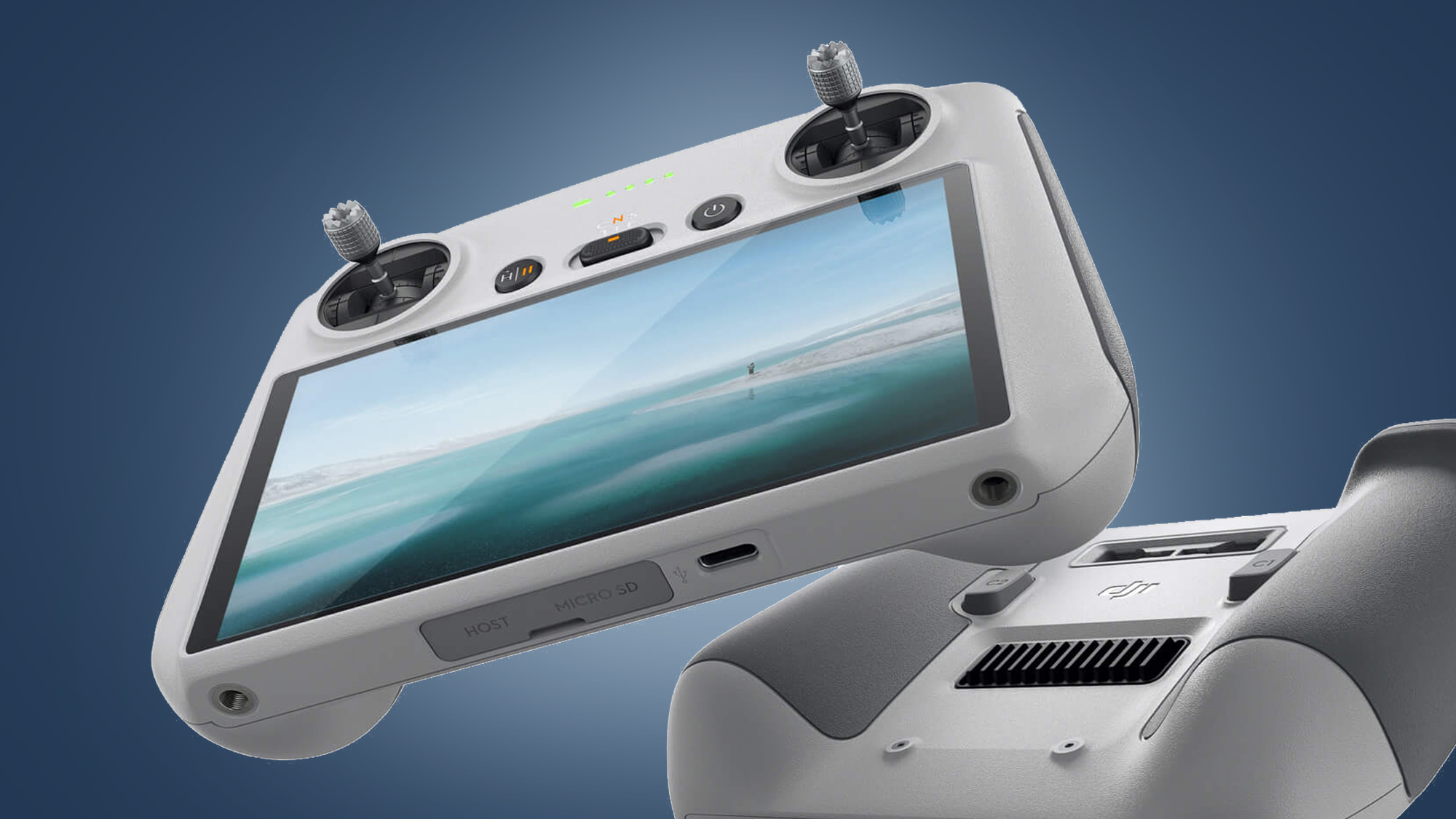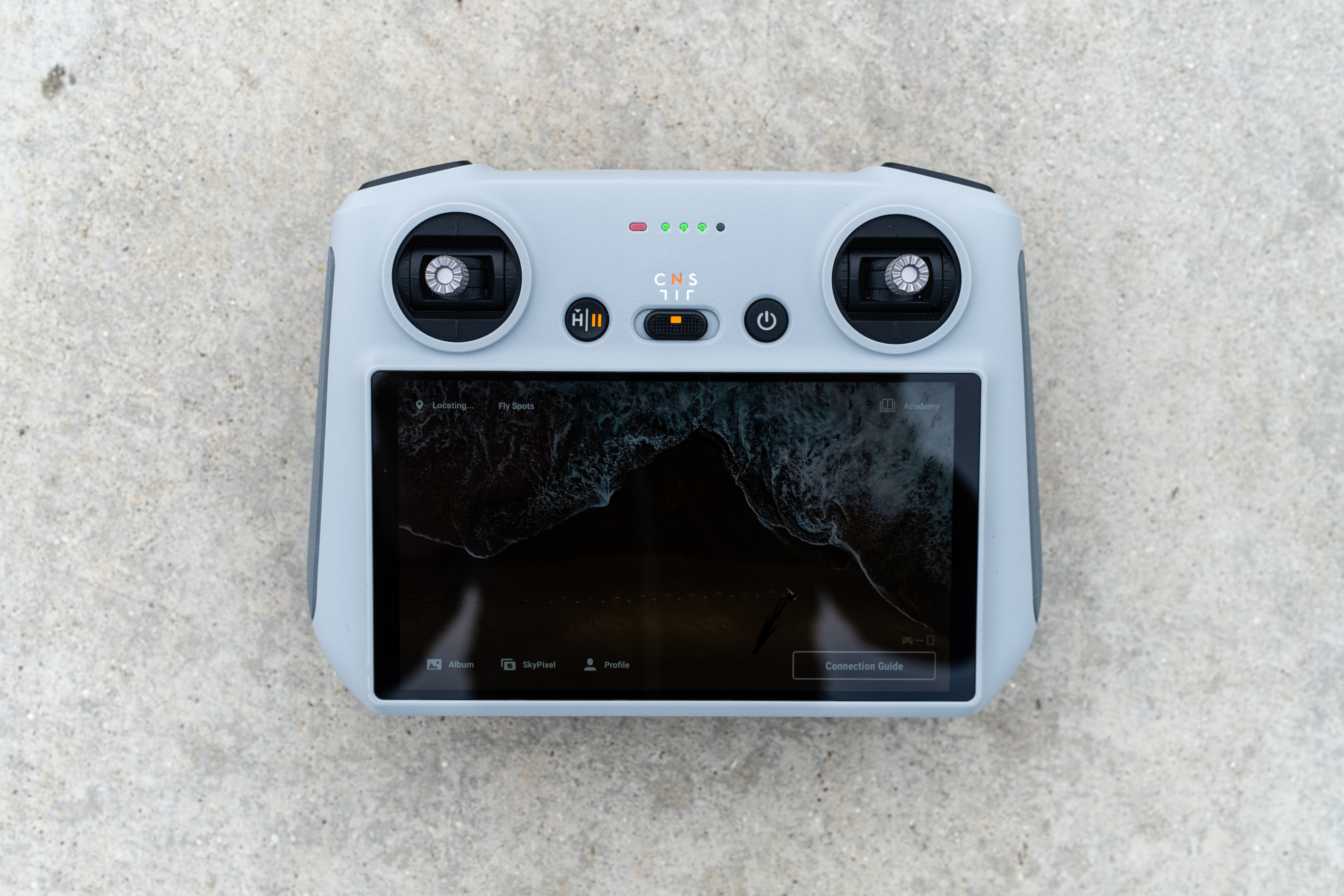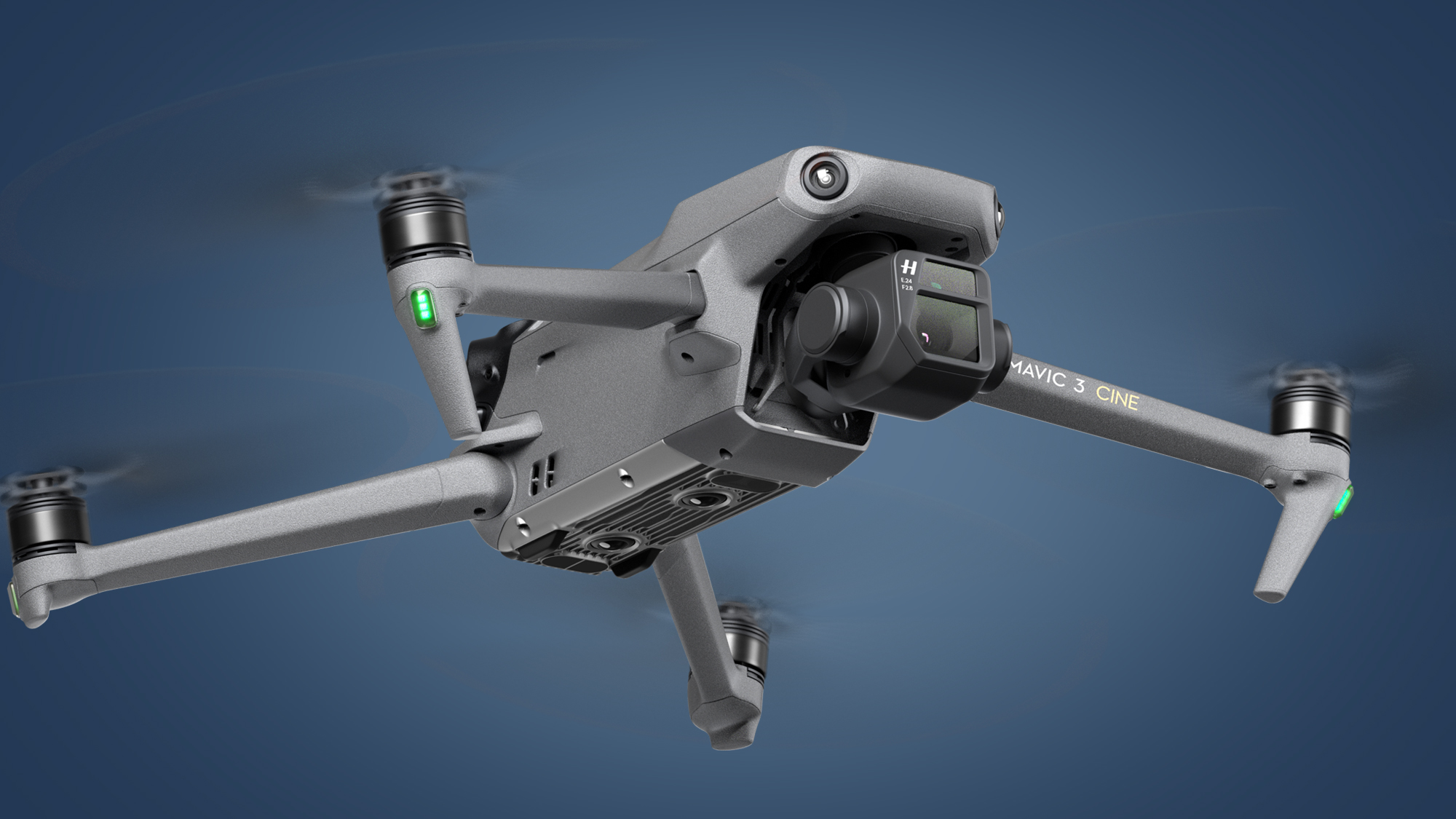It's no secret that the DJI Mavic 3 drone arrived in a pretty undercooked state when it landed last November. Luckily, a series of firmware updates have turned it into a much tastier proposition since then – and a new update, which makes it compatible with the DJI RC controller, has made it a drone I'm now finally considering buying.
Until now, the DJI Mavic 3 has offered only two official controller options. The underwhelming DJI RC-N1, which uses your smartphone's screen and isn't really suitable for such a high-end drone, and the painfully expensive DJI RC Pro ($1,199 / £879 / AU$1,529), which you can also buy as part of the Mavic 3 Cine Premium Combo.
Neither of these are ideal and there's been a gaping hole between them for a pro-friendly controller that doesn't cost the same as an iPhone 13 Pro. DJI did previously have the Smart Controller, which wasn't compatible with the Mavic 3 when it launched. But it's now since released that much-needed sweet spot – the new DJI RC controller, which arrived alongside the DJI Mini 3 Pro in May.

It's been a painful two-month wait, but the DJI RC controller – which crucially comes with a built-in screen – is now finally compatible with the DJI Mavic 3, thanks to the controller's new v01.01.0000 firmware. And I think that now makes it a far better buy, particularly for keen hobbyists.
Unfortunately, DJI isn't yet offering a bundle that combines the DJI Mavic 3 and DJI RC Controller. When I asked DJI if this was possible, it said "we don’t currently have any plans to offer a Mavic 3 + DJI RC bundle".
Instead, you'll need to get the standard bundle with the DJI RC-N1 controller ($2,049 / £1,729 / AU$2,899) and add the DJI RC ($309 / £255 / AU$399). But that's still a vast improvement to the controller situation and, along with all of the other firmware improvements we've seen, make the Mavic 3 a fantastic high-end option for those who need a flying mirrorless camera.
DJI RC vs RC Pro
Considering the huge price difference between the DJI RC and RC Pro (the latter costs over three times as much), there isn't a huge amount to separate them. The main benefits that the RC Pro brings are that its 5.5in touchscreen is brighter (1,000-nits, compared to the RC's 700-nits), its has an HDMI-out port, and it also has 32GB internal storage, alongside its microSD card slot (the RC only has the latter).
But otherwise, both controllers offer the same transmission range (8km) and the DJI RC Pro is almost twice as heavy as its cheaper counterpart. The standard DJI RC also promises a slightly longer battery life than the RC Pro (four hours, versus three hours) thanks to that slightly dimmer screen.

Not that the DJI RC is a complete no-brainer, compared to using your smartphone with the RC-N1. The RC has no built-in internet connection, so you'll need to create a Wi-Fi hotspot with your phone to download things like maps. And unlike your smartphone, it currently isn't possible to install third-party apps like Litchi on the controller to use with the Mavic 3.
But the benefits still easily outweigh these limitations for me. Setting up the DJI RC with a drone is way quicker and less fiddly than using your smartphone, as you just need to screw in the thumbsticks to get going. There are also no interruptions from other apps and the 700-nit screen, while not quite as good as the DJI RC Pro, should be good enough for most situations.
Sure, some smartphones have an even higher max brightness, but this tends to be negated once you factor in the automatic dimming that comes from shooting on a bright, sunny day.
Up in the Air
The value and benefits the DJI RC brings to the Mavic 3, then, make it a far better buy than before. Particularly as this new compatibility also follows a series of big firmware updates to the drone.
We re-tested the drone in February following two of those updates, and were pleased to see improvements to obstacle avoidance alongside the belated arrival of ActiveTrack 5.0 and QuickShots, which are a handy set of automated flight patterns.
Since then, a huge May update also delivered a range of improvements. These included support for ProRes formats, raw photo support for the telephoto lens, a 200fps slo-mo mode and a 'Nifty' ActiveTrack mode that lets the drone negotiate obstacles like tree branches with smoother movements and changes in altitude.

So the DJI Mavic 3 is, finally, living up to its flagship potential, and the new DJI RC controller compatibility is the icing that makes it a really appealing option. Apart from one thing – for most of us, it's still really expensive.
This is where the DJI Mini 3 Pro steps in to tempt amateur fliers who can't, in the current financial climate, justify the $2,358 / £1,984 / AU$3,298 total cost of a Mavic 3 with a DJI RC controller, even if the Prime Day deals do give us a welcome discount.
But the real sweet spot would arguably be a DJI Air 2S, which currently tops our guide to the best drones you can buy, combined with the DJI RC controller. The two currently aren't compatible, but given the Air 2S was updated with DJI RC Pro compatibility, I reckon this will happen later this year. Until then, the Mavic 3 is going to sorely test my financial self-control.
from TechRadar - All the latest technology news https://ift.tt/jAgJDXN